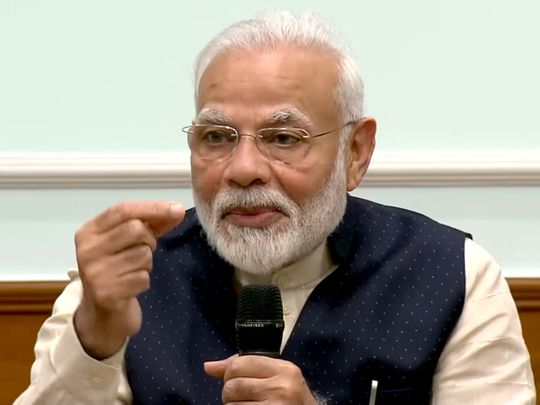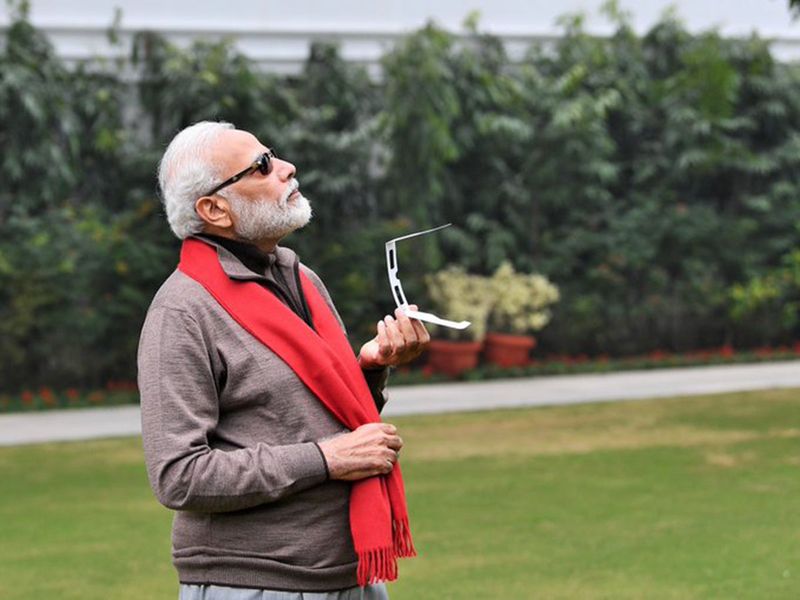
It’s only with awe that one can watch India flit from trouble to trouble. Last week, the country just about got over the Delhi riots that killed over 50 people. The Indian prime minister, Narendra Modi, did not address the nation in what might have been for him an opportunity to be seen as a statesman, appealing to Hindus and Muslims — now officially at war — for peace.
A few days later, Modi was at a global business meeting, at least partially sponsored by Yes Bank, which had crashed and, even as he spoke, the State Bank of India was stepping in to keep afloat what was India’s fourth-largest private bank.
At the global business summit in Delhi, Modi said India was poised to be an economic superpower. There was applause. A Forbes report meanwhile had reported that India was on a downward swing, the worst in 42 years.
In one of his recent Mann ki Baat speeches, a regular radio program in which he addresses the nation, he was talking about the traditional arts of India, and what business potential it had.
In Modi’s mental model of India, the roads are straight and clean, buildings tall and shining, no one defecates in the open, and well-dressed people go to good jobs and pray to their gods. There is no dust. All of Modi’s India is a New York with Lord Ram as its mayor.
The good news that Modi likes to bring is at variance with the general mood of the people. In the same week, the government banned two Kerala TV channels, Asianet News and Media One, from broadcasting for 48 hours as a punishment for ‘biased reporting’ on the Delhi riots. Apparently, hours after the circular was issued, Modi intervened and the order was revoked.
Perhaps to distract one and all from these conflicting versions of depressing reality, or perhaps tired of his own failure at controlling the chaos, Modi closed the week with an announcement that he was ‘signing off’ his roughly 50 million-strong social media accounts (FB, Twitter, YouTube, Instagram).
He said he was ‘thinking’ about it, and that he would keep everyone ‘posted.’ There were panic reactions asking him not to and equally fierce trolling.
In the event, the spin doctors came to the rescue and said the prime minister meant signing off for one day (March 8, Women’s Day) so seven women achievers can communicate to the people about their work through his handles.

Yes Bank crash
There is a pattern of indecision in the Modi we see now. The India that Modi has in mind — the India that Modi is addressing in various forums — is not the India that people are encountering on an hourly basis. This disconnect could happen to the best among us. It is truly difficult to step out of the mental model of one’s reality and see the world for what it is.
This is why communication is a fraught process: what one says is not what another hears; what one writes is not what another reads. People tend to carry out whole conversations reacting to the one word that makes sense to them. But when a leader is beleaguered by this problem of disconnect, the results could be disastrous.
The demonetisation of (November 2016) was probably the first major tragedy of the difference between Modi’s mental model of India — a clean, cashless, digital economy — and the real India. In the real India, 70 per cent of the money was black. And for a reason, as instanced by the Yes Bank crash.
India’s banks are in general debt-ridden by non-performing assets. If your money can’t be trusted with your government and the banks, why should you not store it in your pillow? Now Indians have neither money in the bank, nor indeed the pillow.
Again, in Modi’s mental model of India, the roads are straight and clean, buildings tall and shining, no one defecates in the open, and well-dressed people go to good jobs and pray to their gods. There is no dust. All of Modi’s India is a New York with Lord Ram as its mayor. This is far from the India of reality.
Informal transactions
The truth is India is unlikely ever to be completely urbanised. Its overall predilection is toward a relatively simple agrarian society with its associated chaos and informal transactions.
It optimises evolutionary behaviours and quasi business practices (quasi, because naturally there is a tendency for endemic corruption as no one trusts the other) at the much-maligned Hindu rate of growth of 3.5%.
That number became a matter of derision in the liberalised ‘90s. But the chances are that 3.5 is not just a growth number that defined India’s development from the 50s to the 80s. It is indicative of its tolerance level to change. In Modi’s mind, the growth rate of India is in double digits.
Naturally, he sees New York in New Delhi and New Delhi everywhere. And, so, everywhere he goes in India, this is the model that he projects on to the audience as he talks to them. The audience has begun to resist. It is not as if Modi does not know poverty. He comes from straitened circumstances.
Naturally, he sees New York in New Delhi and New Delhi everywhere. And, so, everywhere he goes in India, this is the model that he projects on to the audience as he talks to them. The audience has begun to resist
Ironically, that is the reason why he wants India to be rich. But the urgency of that need may have a delusional effect. When you want a thing so much, often you may act as if you have already got it.
The reason why Modi deliberated, even if fleetingly, signing off the social media, is that it must have struck him as sad and unfair that people (50 million is a whole nation) are making fun of him, of his good intentions. The truth is that the Indian prime minister is a time traveller.
He has gone ahead in his personal rocket (consider his panache for the moon and Mars missions), and found for himself an India of the future: it floats in the outer space, neat and orderly but reassuringly still bovine. It is not. And except in pockets, it is not likely to be so in the future either.
This is hard to internalise for a leader like Modi. Because it would involve activating the reverse boosters of his rocket. If he does, there is, alas, no Modi. But if he doesn’t, where he lands would be more remote than Mars.
— C.P. Surendran is a senior journalist based in India





